We hate to be the bearer of bad news, but nearly everything you know about keeping a rug clean is wrong. Fortunately, the Lowcountry happens to be home to a person who has learned nearly everything there is to know about rugs – literally from the ground up.
Gerald Brant, owner of Lowcountry Clean Care, has helped restore countless rugs to life using his combination of state-of-the-art technology and in-depth knowledge of the subtle science behind how it all works.
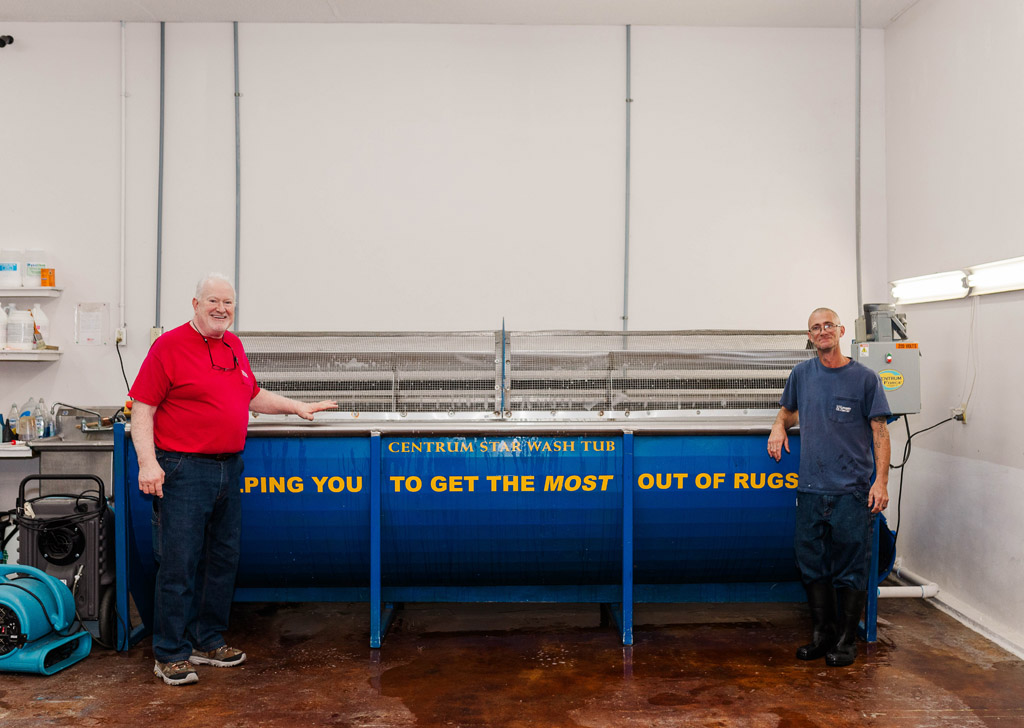
Gerald Brant (owner) and John Moseley finish putting a rug into the tub.
“I don’t think a lot of people understand the difference between cleaning and washing. Not too many people give it much thought,” said Brant, who is a member of the Association of Rug Care Specialists (ARCS).
What Brant does at Lowcountry Clean Care goes far beyond simple cleaning; he puts rugs through a time-tested system that goes deeper than anything you could do at home.
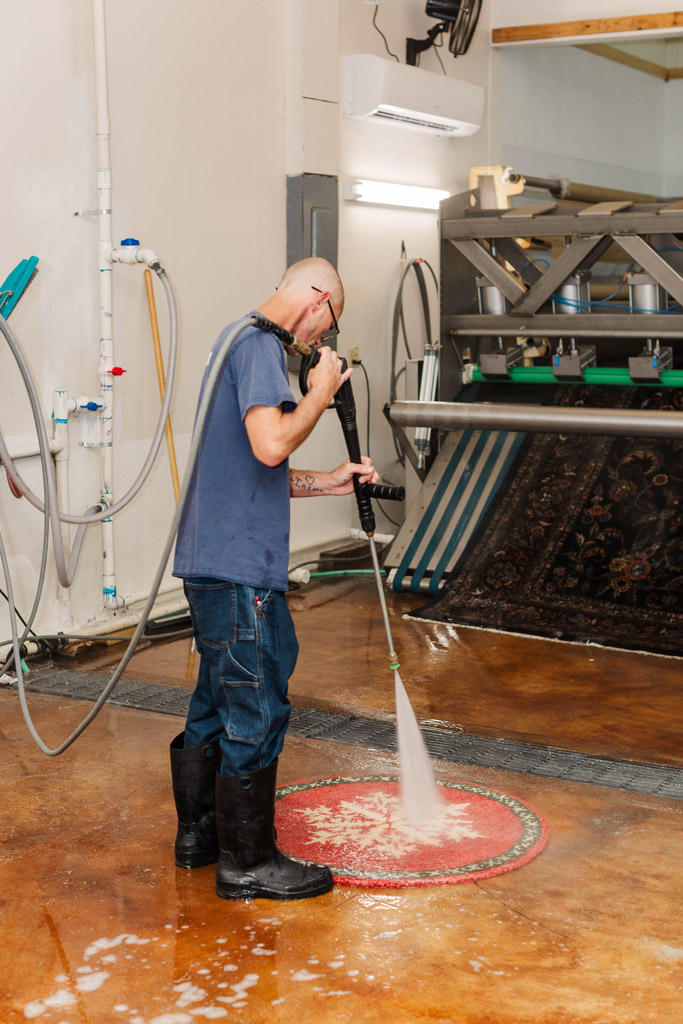
Moseley works on the first rinse.
The first step is a gentle rinse in a massive tub washer that soaks the rugs while slowly churning them, easing out the set-in dirt and grime permeating the rug without damaging its delicate structure.
Then it’s off to the technological marvel that is the Catinet rinsing press, a European-made machine that rolls every rug through a gauntlet of high-pressure sprayers that clean deep into the fibers before squeezing the rug between compression rollers that banish filth and dirt.
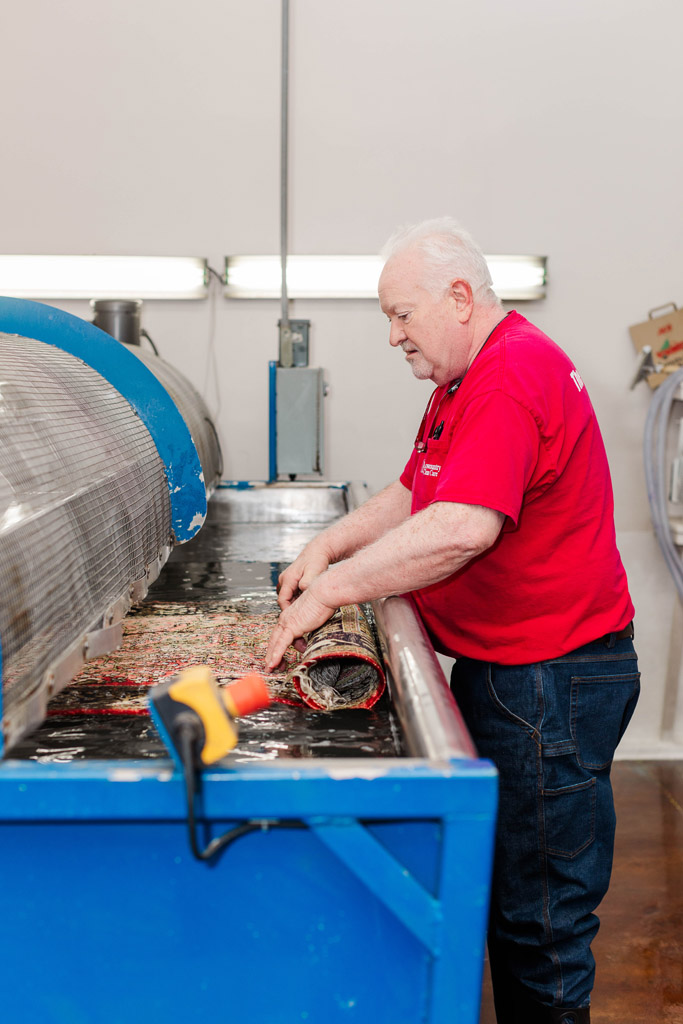
Brant adds another rug to the tub.
Followed by painstaking examination and spot cleaning by Brant, it’s a method that bridges washing and cleaning for rugs that look new.
“We have this great specialized equipment, but you can give anyone the best equipment and they can still screw it up,” Brant said. So, he leans heavily on the knowledge that he’s developed after decades of studying the fine art of dirty rugs. “You have to have the skills to know what to do because there are so many things that can go wrong,” he said.
Brant has the technology, and he has the know-how. And he’s here to teach us a few things about rugs that might just save you from losing the most stylish accessory your floor has.
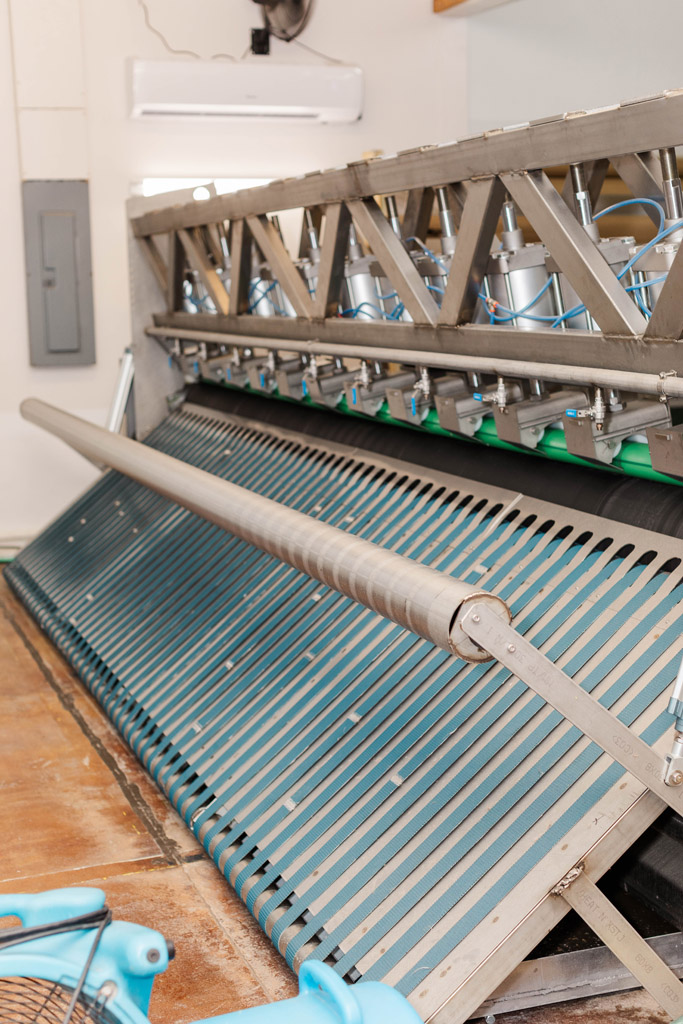
Rinsing press with stabilizing roller up just prior to rug going onto conveyor.
Avoid Hand-Tufted Rugs
Whereas a hand-knotted rug uses the same techniques that rugmakers have used for centuries, hand-tufted rugs require far less time to make. Created by punching strands of wool through a frame-stretched canvas, which is then adhered to some kind of backing like a scrim fabric, hand-tufted rugs don’t require the kind of expertise that hand-knotted rugs require.
The trade-off is that not only will hand-tufted rugs hang onto stains and soils with greater tenacity, they also show their age much sooner.
“I wish they didn’t exist,” Brant said. “They’re nothing but a problem unless you use it in a formal setting where you don’t have a lot of traffic.”
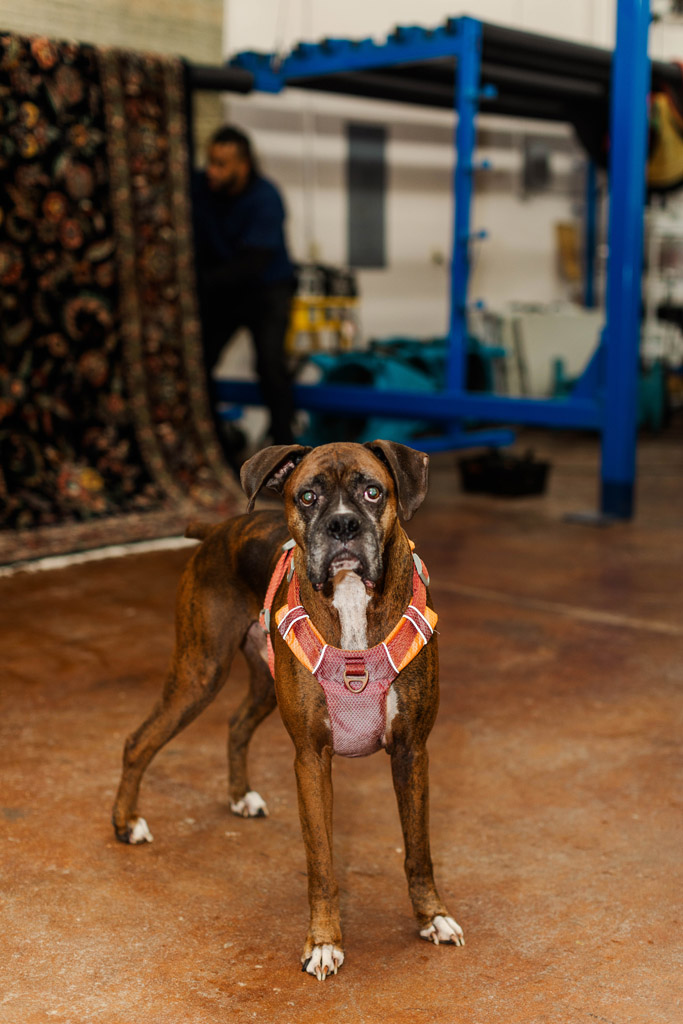
Hammie, the Lowcountry Clean Care mascot supervises everyone’s work.
That ‘Silk’ Rug Isn’t What You Think
One of the biggest – and most alarming – trends that Brant is seeing in the rug world right now is the emergence of rayon rugs. Made of cheaper synthetic fibers, these rugs are made to be almost disposable, as they are quick to wear out and resistant to any attempts to clean them.
“There are a lot of names they use – viscose, faux silk, bamboo silk. … To me, anytime you see a name like that on a material it’s probably rayon in disguise,” Brant said.
Rayon’s sneakiness comes from the fact that the word “rayon” covers essentially any natural material that has been artificially regenerated, from cotton or hemp to bamboo and flax. And the process that transforms those natural materials is banned in the U.S., according to Brant, meaning most are created in places with lower standards.
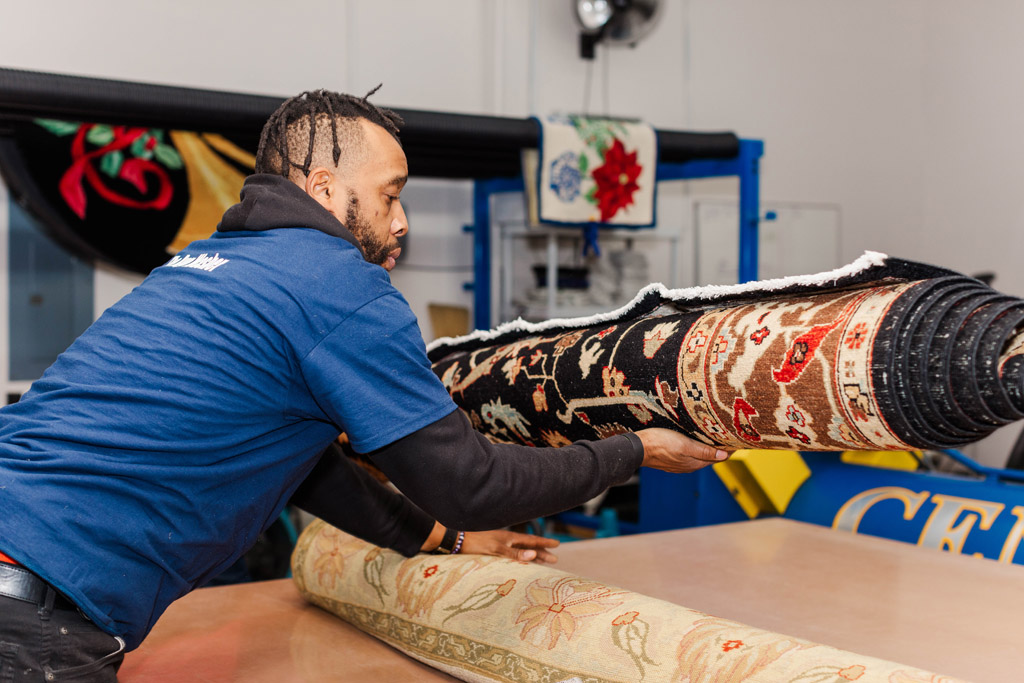
Eddie places a finished rug on the table after the drying process.
“It’s one of the worst materials out there,” Brant said. “It can be cleaned, but it’s always unstable. For the most part, it acts like what it was made from. And that means it has cellulose in it, which turns brown if it stays wet too long. And if it comes into contact with high-Ph chemicals without being rinsed with acidic ingredients, it’s going to turn brown.”
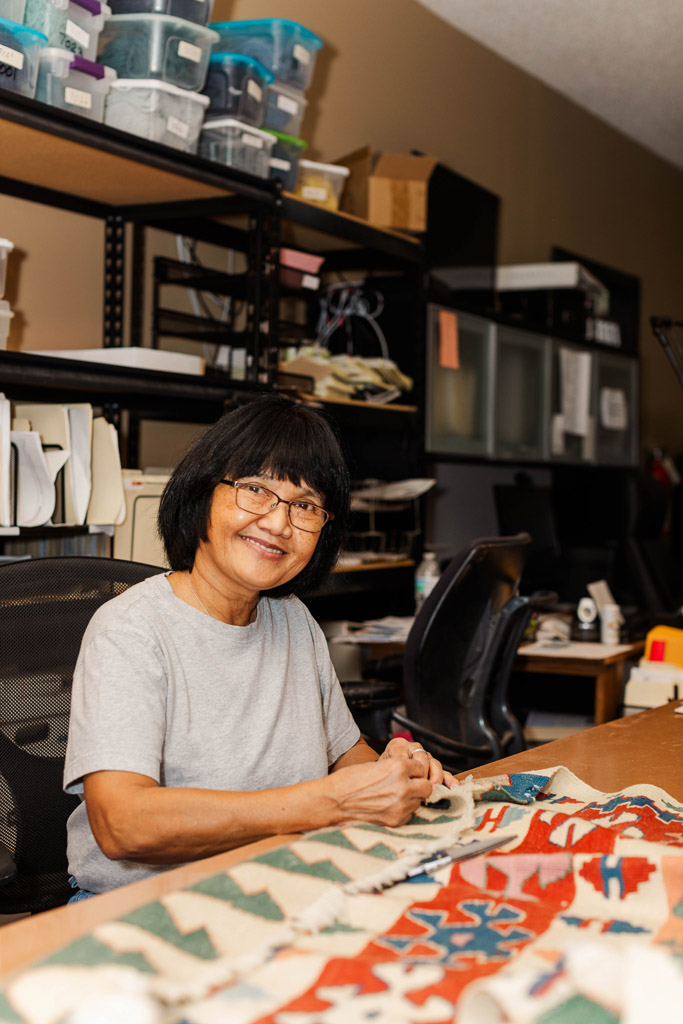
Sadwalak, the newest member of the team, doing an excellent job stabilizing this Kilim rug.
Watch That O.J. Around Your Rug
Most of the dyes used to create the colorful patterns in your rug are acidic in nature, rather than being natural or reduced dyes. As such, they are particularly vulnerable to staining when faced with something that shares its acidity.
“One client I worked with had a very expensive rug that someone had dropped a smoothie on. OK, it was the husband. I gave her some options, and I’ll always try to give people ideas to fix their problem if it’s feasible,” he said. “But all citric fruits are acidic and since most rugs use acidic dyes, they just gobble it up.”
So go ahead and enjoy that smoothie or big glass of orange juice, but make sure you keep it in the kitchen where it belongs.
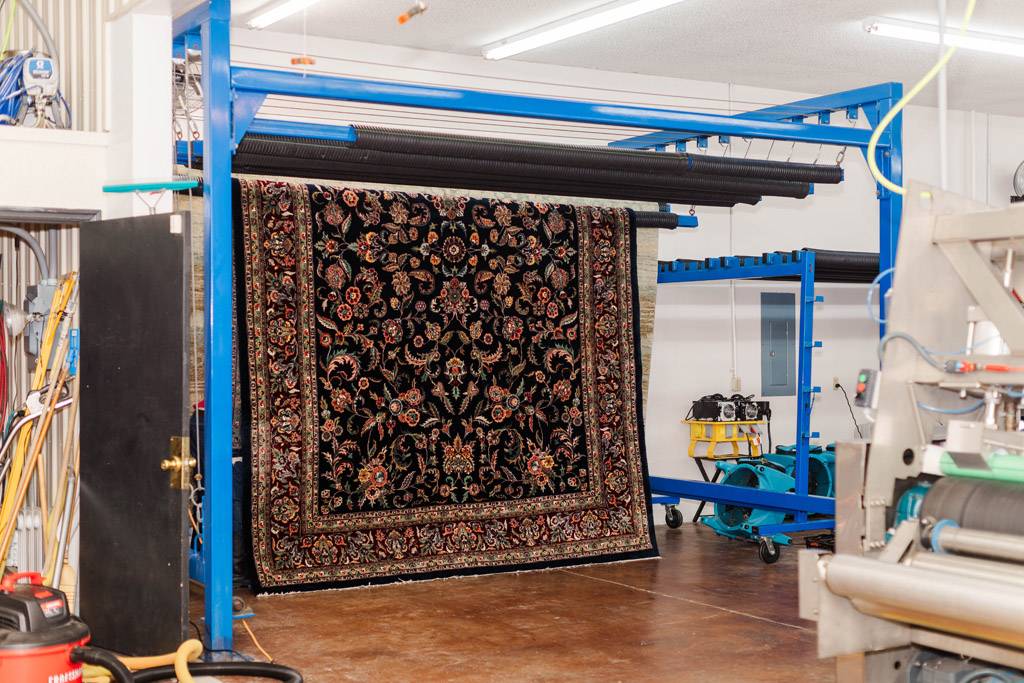
Rugs hang to dry on enormous rug rack after the cleaning process is finished.


